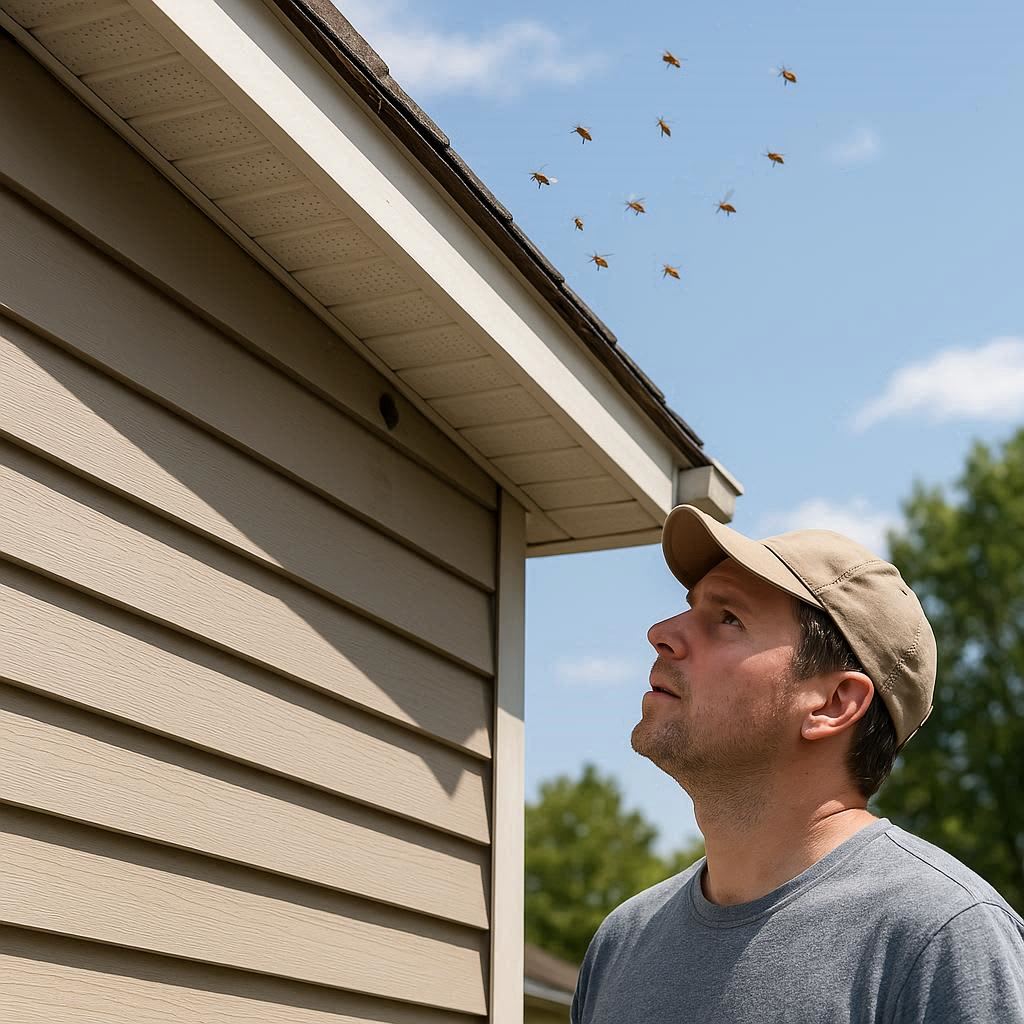Signs a Bee Colony Is Forming in Your Home — And What to Do Before It Becomes a Problem

Most homeowners don’t realize they have a bee problem until the buzzing becomes constant — or until honey starts dripping down the wall. Bees don’t settle overnight. Before a full colony develops, there are clear early signs that can save you time, money, and stress if detected early.
In this article, we’ll walk you through how to recognize the first signs of a bee colony forming, what you should avoid doing, and how to take safe and effective steps to handle the situation.
Why Bees Choose Homes and Structures
Bees are Bees are naturally attracted to small, protected cavities where they can safely build a hive and produce honey. Common spots include:
- Roof eaves and attic spaces
- Wall cavities or cracks in siding
- Chimneys or vent openings
- Tree hollows near the house
Warmth, shelter from rain, and nearby food sources (flowers, gardens, fruit trees) make residential properties ideal nesting sites — especially during spring and early summer, when colonies split and new queens look for a home.
Early Warning Signs of a Bee Colony
If you know what to look for, you can detect a developing hive before it becomes a full infestation. Here are the most common indicators:
- Consistent buzzing sounds inside walls, ceilings, or vents.
- Bees repeatedly flying in and out of the same small opening (often a gap in siding, a hole in the wall, or under roof shingles).
- Sticky or dark stains on walls or ceilings — possible honey seepage.
- Wax flakes or debris around entry points.
- An unusual number of bees hovering around windows, light fixtures, or corners of your home.
- A faint sweet smell, especially in warm weather, which could indicate honeycomb buildup inside walls.
If any of these sound familiar, it’s time to investigate before the colony expands.

What Not to Do
IWhen homeowners notice bees, panic often leads to risky mistakes. Avoid the following actions:
- Don’t spray insecticides or chemical repellents. Most won’t reach the queen or deep sections of the hive and may anger the colony.
- Don’t block the entrance hole immediately. Bees trapped inside may find new exits — even through drywall or vents.
- Don’t try to remove the hive yourself. Professional bee removal requires proper gear, equipment, and experience to avoid injury or property damage.
What You Should Do Instead
If you suspect a hive forming in or around your property, follow these safe and effective steps:
- Keep a safe distance. Do not disturb the bees by knocking, spraying, or touching the area.
- Observe quietly. Take note (or a short video) of where bees are entering and leaving — this helps professionals identify the colony’s location.
- Call a licensed bee removal expert. A professional can assess the size of the colony and remove it safely without harming the bees or your home.
- Schedule a follow-up inspection. After removal, ensure the area is properly sealed to prevent re-entry.
Preventing Future Bee Infestations
Once the hive is gone, prevention is key. Here are a few simple ways to keep bees from returning:
- Seal cracks and gaps in walls, siding, and rooflines.
- Install screens or mesh on attic vents, chimneys, and wall openings.
- Trim trees and shrubs near your roof or walls — overhanging branches attract bees.
- Keep outdoor spaces clean. Avoid leaving sugary drinks, ripe fruit, or open trash bins outside.
- Schedule regular inspections, especially during spring, to ensure your home stays bee-free.
Pro tip: Bee-proofing your property is far more affordable than a full hive removal — and prevents potential structural damage from honey and wax buildup.

Bees are vital for our environment, but they don’t belong inside your walls. Recognizing the early warning signs can help you act fast and keep both your family and the bees safe.
If you suspect a bee colony forming in your home, don’t wait until it becomes a bigger problem — contact Bee Removal Specialist for fast, eco-friendly, and professional service.
We remove, relocate, and protect — safely and responsibly.
Contact us today to schedule your bee inspection or same-day removal service.

Beekeeper Specialist October 13, 2025
